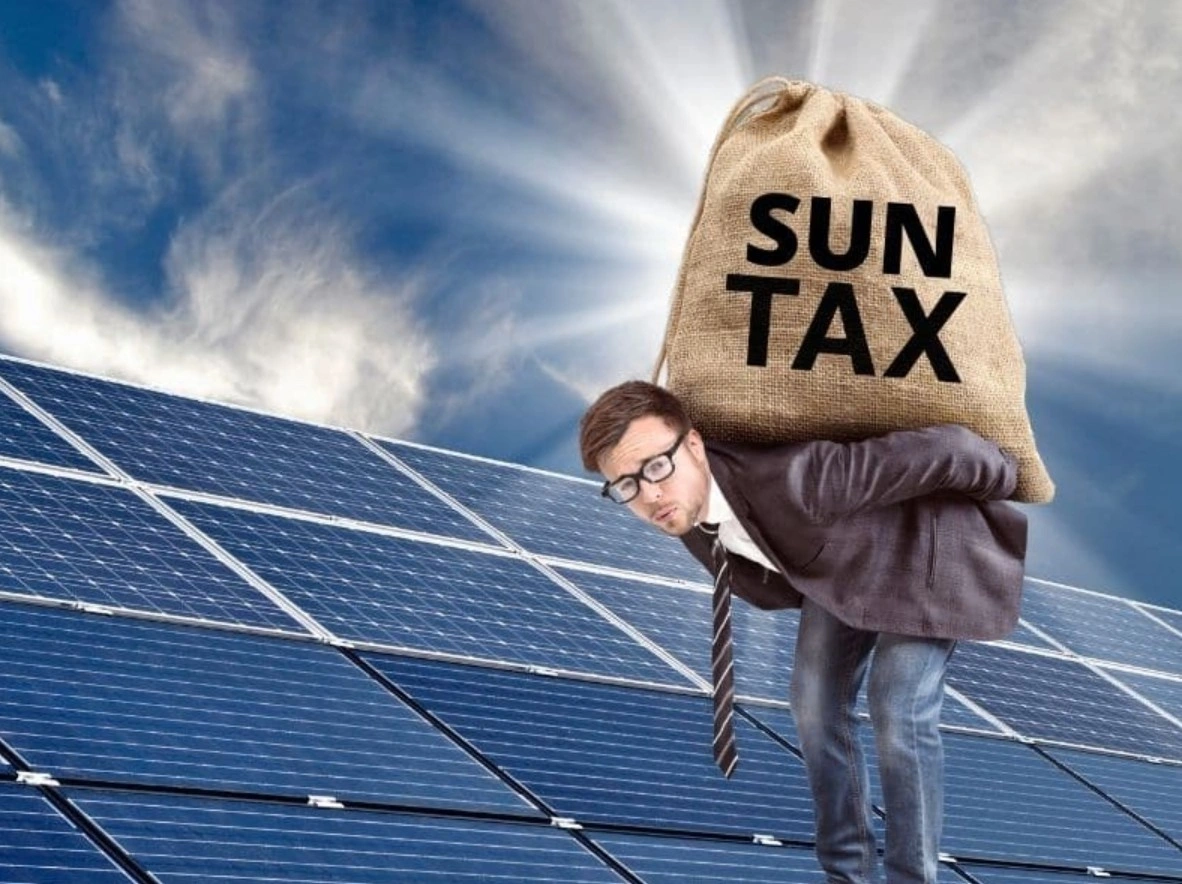
Back in 2008, feed-in tariffs were introduced as a way to reward solar panel owners in Australia for exporting excess energy to the grid. Fast forward to today, and there’s growing talk of a shift in how these rewards work, with a new two-way pricing system being considered, where solar owners might pay to export electricity. The media has dubbed it the “Sun Tax”, and it’s gaining traction, especially here in New South Wales.
What Exactly Is the Sun Tax?
The so-called Sun Tax refers to a two-way pricing mechanism for solar exports.Basically, solar users would be charged for sending extra energy to the grid when there is too much of it. — The best time for most solar systems to produce power is between 10 am and 3 pm.
To balance things out, exporting solar power after 4 pm may earn higher rewards, giving households an incentive to send power to the grid when it’s actually needed.
This idea has been on the table since August 2021, when the Australian Energy Market Commission (AEMC) approved further investigation into this new pricing structure. Since then, the Australian Energy Regulator (AER) has been reviewing the proposals from electricity distributors across different states.
How Will the Sun Tax Work?
The Sun Tax is only being thought about for states that are linked to the National Electricity Market (NEM) — including NSW, VIC, QLD, SA, and TAS. Each state is taking a different approach, with NSW preparing for changes starting in July 2025.
Sun Tax in NSW
For people who live in NSW, changes are set to start on July 1, 2025. The structure has been described by electricity distributors such as Essential Energy and Ausgrid:
- A charge of 1.2c/kWh for exports between 10 am and 3 pm
- A reward of 2.3c/kWh for exports between 4 pm and 9 pm
- An export-free threshold will apply between 10 am and 3 pm.
This means not all daytime exports will be charged. For example, the first 6.8 kWh of energy exported each day or over a monthly total may be exempt, and only exports above this cap will attract the fee.
Importantly, the charge won’t likely appear as a new line item on your bill. Instead, your solar feed-in tariff will be adjusted by your electricity retailer to reflect these changes. According to Ausgrid, a typical 5kW residential system might see a minor cost increase of around $6.60 per year, or just 13 cents a week.
What’s Happening in Other States?
Queensland
The AER recently rejected two-way pricing proposals from Energex and Ergon in QLD. Their initial plan suggested a voluntary opt-in starting July 2026, with full implementation by July 2028. For now, QLD solar owners can relax — but if the new proposal gets approval, generous rewards for post-4 pm exports may be on offer.
Victoria
Victoria is not supporting a mandatory Sun Tax before July 2031. Distributors like Ausnet and United Energy are not proposing export charges at this stage. Instead, Victoria is focusing on incentivising exports during the evening and maintaining its regulated feed-in tariff model. Some optional flexible feed-in rates are already in place.
South Australia
SA Power Networks is preparing for a Sun Tax rollout from July 1 July 1, though their initial tariff structure was not fully approved by the AER. That said, two-way pricing has been endorsed. Here’s how it’s expected to look:
- Smart meters: 1c/kWh charge after 9kWh/day of exports (10 am – 4 pm)
- Legacy meters: 0.75c/kWh charge after 11kWh/day (10am – 4pm)
Currently, no reward is offered for customers with systems smaller than 30kW. The final plan depends on the AER’s approval of an updated proposal.
Tasmania
TasNetworks is not proposing a Sun Tax before July 2029, so Tasmanian solar owners won’t see any changes for the foreseeable future.
Why Is This Happening?
While a Sun Tax might sound like a punishment for doing the right thing, it’s not a reversal of solar incentives. In fact, Australia’s national solar rebate scheme is still on track to continue until 2030.
The issue lies in the oversupply of solar energy during the middle of the day, when grid demand is at its lowest. This causes voltage instability and, in extreme cases, can lead to blackouts. Wholesale electricity prices often drop to near-zero levels during this time as well.
To manage these challenges, some states (like Victoria) are even exploring throttling inverters during these hours to prevent excessive export.
How to Avoid the Sun Tax and Maximise Savings
People who live in NSW should be smarter about how and when they use their solar energy because the Sun Tax is coming up soon. Here are three practical ways to beat the charge:
- Use more energy during the day – Run appliances like dishwashers, washing machines, and EV chargers between 10 am and 3 pm to soak up your solar instead of exporting it.
- Invest in a solar battery – Store excess energy during the day and use it later in the evening when tariffs are higher.
- Consider east-west panel orientation – This spreads out solar production and helps avoid midday oversupply.
Final Thoughts
The Sun Tax is coming to NSW in 2025, but it’s not as harsh as it may sound. For most households, the cost will be minimal if they make minor adjustments. It’s really just the next step in a long evolution of Australia’s solar incentives, encouraging more innovative energy use and a more balanced grid.
If you want to stay ahead of the curve and continue making the most of your solar investment, now is the time to rethink your usage patterns, consider battery storage, and explore the best feed-in tariffs available in your area.